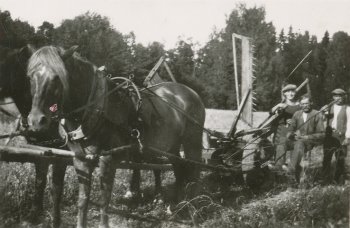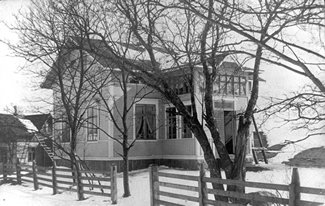 The development towards an independent municipality started when the municipal grain storage facility in Ingå/Inkoo proved too small. The people in Degerby suggested in 1849 that they should build their own grain storage. This was a motion no one dared to think about a hundred years earlier, but they got their way!
The development towards an independent municipality started when the municipal grain storage facility in Ingå/Inkoo proved too small. The people in Degerby suggested in 1849 that they should build their own grain storage. This was a motion no one dared to think about a hundred years earlier, but they got their way!
When the new law concerning municipal administration got legal power in 1867, the inhabitants of Degerby made sure that they could form a municipality of their own, i.e. Degerby.
Degerby was a well-managed small municipality, with seven schools, an administrative building, a library, a midwife, a nurse and a fire-inspector. The first school was opened in 1847 in the churchvillage. Bureaucracy was immediate, on occasions it happened that the chairman of the taxation board paid the taxes for people who could not afford to pay them.
 In addition to the church the administrative building - Rosenberg (picture) was situated in the village center. The post office was opened in 1891. The other village center was Solberg/Päivölä. Everyone had some business there because this is where the railwaystation was located. Milk was delivered here in the mornings and the mail was picked up here for further delivery by the postman. It's been said that Solberg/Päivölä looked like an urban district with its welcoming lights.
In addition to the church the administrative building - Rosenberg (picture) was situated in the village center. The post office was opened in 1891. The other village center was Solberg/Päivölä. Everyone had some business there because this is where the railwaystation was located. Milk was delivered here in the mornings and the mail was picked up here for further delivery by the postman. It's been said that Solberg/Päivölä looked like an urban district with its welcoming lights.
As a consequence of the demands of the armistice Porkkala was leased to the Soviet Union for 50 years. Of the 1 400 inhabitants of Degerby 1 200 were evacuated in fall 1944. As from the 1st of January 1946 Degerby municipality was joined with Ingå/Inkoo. The parish was joined to Ingå parish as from the 1st of January 1950.
Any change to the state of matters failed after 1956, when the Soviet Union returned the Porkkala area to Finland. People living in Degerby are still inhabitants of Ingå/Inkoo. However they are also very strongly inhabitants of Degerby.
 Suomeksi
Suomeksi  По-русски
По-русски  auf Deutsch
auf Deutsch  简体中文(中国)
简体中文(中国)  Svenska
Svenska 